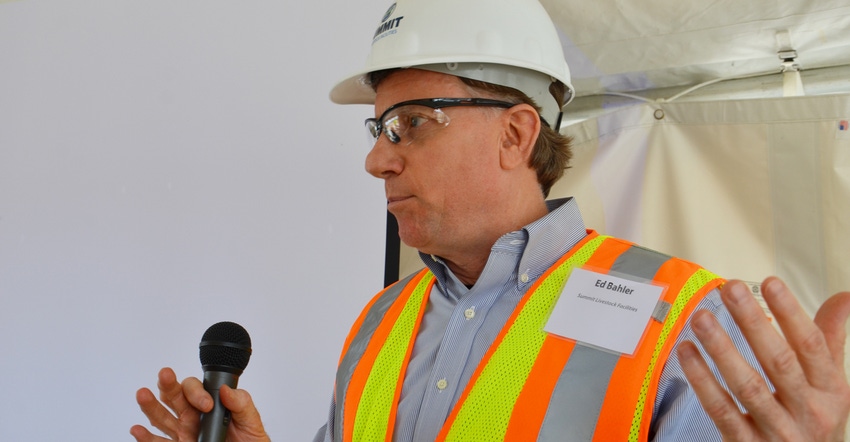
What do you do when you know there is growing demand for protein around the world, but also increasing pressure from customers who want egg-producing hens raised in a healthier environment? In today’s terms, “healthier environment” translates into cage-free egg production.
If you’re Ed Bahler, chief executive officer of Summit Livestock Facilities, Remington, you read texts sent by Tony Wesner, chief operating officer of Rose Acre Farms, even in the middle of the night! “We were working on solutions to how we could work together to build cage-free houses in such a way that the egg producer could stay cost-effective,” Bahler says. “One night I heard a text come in while I was in bed. It was from Tony.”
“We were wrestling with how to make this work, and I woke up with an idea,” Wesner relates. “What if we put all the cages and equipment together first, and then wrapped the equipment with an outer shell, instead of building a traditional building first and then installing equipment?”
Neither of their wives were too crazy about the middle-of-the-night texting, both say with a smile, but after a lot of “What if?” and back and forth between various members of both companies’ teams over the next few weeks, they arrived at a decision. It is possible to erect equipment first and then wrap it with 2-inch insulated steel panels.
The “wrap-the-equipment” concept is now a patent-pending idea. One chicken house using the technology is already in production at Rose Acre Farms’ Pulaski County location, and two more are under construction.
What’s at stake
“We had to go outside the box because the poultry industry simply doesn’t have the capital to convert to cage-free production using traditional construction and production methods. It’s simply cost-prohibitive," Bahler explains.
“This design allows us to shave off both time and cost of construction. Based on what we’ve done so far, we can shorten construction time from beginning to egg production from around 155 days for a conventional building to about 100 days. That means the producer, in this case Rose Acre Farms, can bring eggs out of the facility about eight weeks sooner than when they built conventional buildings. Getting into production faster helps generate income faster.”
The new design is still complex, Bahler acknowledges. He estimates there are 2.7 million parts in each building, including 700 different types of parts. Each house at Rose Acres' Pulaski County farm is designed for 378,000 chickens.
Even though chickens are free to roam within a 50-foot-long area that makes up a section, and free to roost, lay eggs, scratch and even fly, the system is still fully automated. Four or five employees can take care of a house, Wesner notes.
“What we’re trying to do is help them build as much capacity as possible at the lowest cost possible,” Bahler says. “Rose Acre Farms has been great to work with. We bounce ideas off each other. We have our moments, but in the end, we respect each other and work together well.”
The result is the future of cage-free egg production, Bahler concludes.
About the Author(s)
You May Also Like




